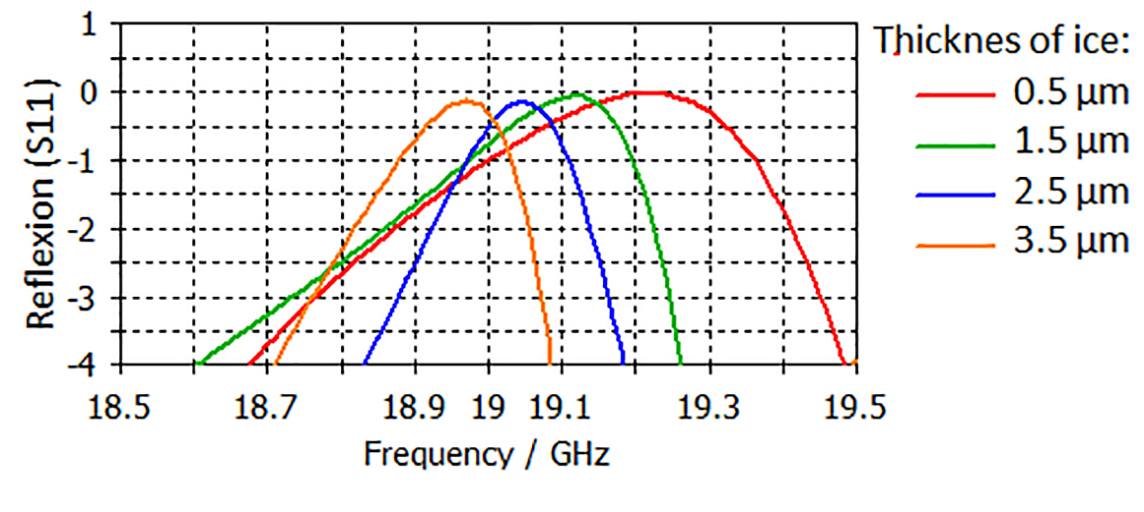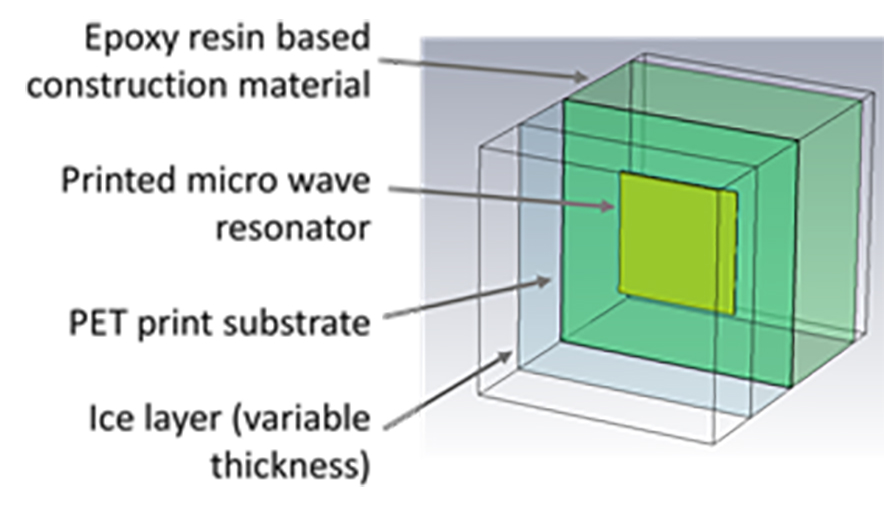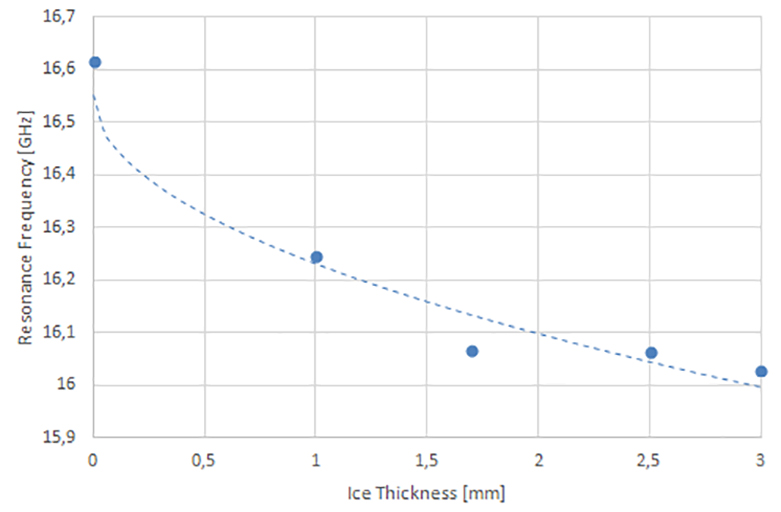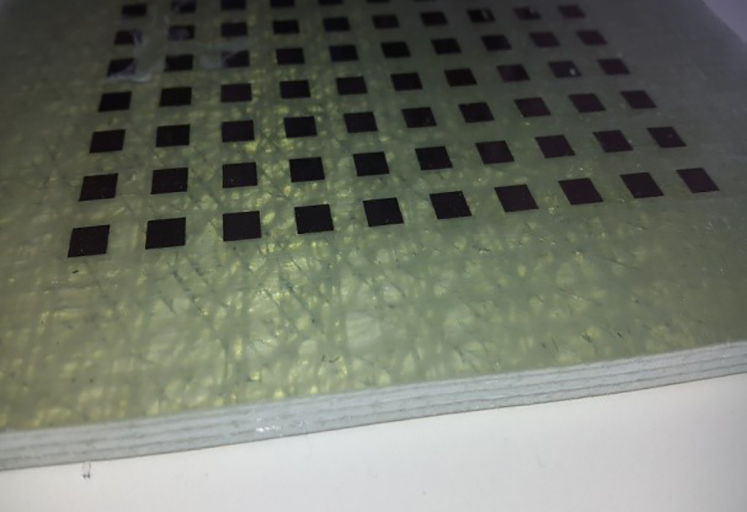Remote ice detection by printed resonator arrays for rotor blades of wind power plants
Remotely accessible ice detectors applied in rotor blades of wind power plants can help to reduce downtime, especially in cold regions or in cold winter months. If ice accretion occurs, the wind power plant has to be shutdown to avoid ice throw, operational hazards and to prevent noise. Currently, precautionary shutting down the wind power plant is controlled by weather stations on the towers, if conditions let assume ice accretion. It may also occur in situations without real ice accretion and reduces the operator’s profit. Therefore, sensor systems detecting ice accretion directly on the blades are highly desirable. Current sensor concepts comprise active sensors that require wiring for power or data transfer. Cables as well as their connections must be integrated into the blades. A passive sensor with remote read-out reduces the integration efforts significantly leading to further proliferation of ice detectors and wind power plants and hence, increases global power output.
The sensor approach for ice accretion recognition on rotor blades comprises of a periodical two-dimensional grid of passive resonators made of planar conductors. They are integrated into the blade (a fiber-reinforced structure) close to the surface to provide the sensor functionality. The resonance frequency and the quality factor of the resonators depend on the permittivity of the materials wherein the electromagnetic fields extend. Numerical 3D full-wave simulations using CST Microwave Studio have shown that an ice capping on the resonator causes a shift of the resonance frequency toward lower values. Ice has much higher permittivity than the air that flows over the blades usually. The resonators are able to detect the difference, even when they are located a few millimeters below the blade’s surface. Applying reflection measurement using microwaves to determine detuning of the resonator enables remote operation.
For the fabrication of the sensor, technologies are used that can be easily adopted by the common fabrication processes of the blades. The first step in sensor fabrication is realizing the conductive patterns of the resonators. Gravure printing with silver ink on large rolls of coated PET foils is applied to achieve low-cost and large-scale production. After printing the resonators, sintering is necessary to get conductive surfaces. In the second step the printed resonators are integrated into the fiber-reinforced plastic using vacuum infusion technique. Cross-bonded glass fiber layers are placed on the printed foil and get impregnated with epoxy resin. After a drying period of 24 hours (under vacuum), a compact piece of glass fiber-reinforced plastic with the integrated sensor is available.
The passive sensor demonstrated the detection of ice accretion in first experiments. Wherein, ice layers with increasing thickness were generated. The necessary lab-equipment comprises two horn antennas connected to a network analyzer. The antennas point both to the resonators; one stimulates the resonators the other collects the reflected signal. The network analyzer displays the variations of the reflection behavior in case of increasing ice accretion.
The performed measurements show a shift of the resonance peak with strong correlation to ice accretion. Therefore, the presented sensor approach including its fabrication shows the generation of sensitive functions. This enables the fabrication of smart lightweight structures with integrated sensor functionalities without using sensitive electronic components and wiring within the lightweight structures of a rotor blade.
Acknowledgement:
This work was performed within the Federal Cluster of Excellence EXC 1075 “MERGE Technologies for Multifunctional Lightweight Structures” and supported by the German Research Foundation (DFG). Financial support is gratefully acknowledged.
Also a special thanks is due to the employees of the Center for Microtechnologies (ZfM), the Institute for Printing and Media Technology and the Institute of Lightweight Structures of TU Chemnitz for their efforts and their support.
 Fraunhofer Institute for Electronic Nano Systems
Fraunhofer Institute for Electronic Nano Systems


